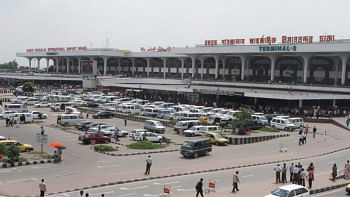Managing stimulus packages and banking sector liquidity

Like the rest of the world, the Bangladesh economy is reeling from the shocks of the coronavirus pandemic.
Apart from the health and safety issues relating to COVID-19, a discussion on possible measures for both the economy and financial sector liquidity has become essential.
As per the prediction of many economists, Bangladesh's gross domestic product may shrink by 2 per cent to 3 per cent, although the extent of severity and recovery mainly depends on how long the pandemic will drag on.
It is also important to note that the country's trade to GDP ratio was 38.24 per cent in 2018, which signifies that the recovery of our economy will also depend on how the world economy, particularly the US and European economies, behave in the post-pandemic period.
The government and the Bangladesh Bank have initiated several praiseworthy measures for the sake of the general people, real economy, and most importantly, the financial system.
Their decisive actions have already created confidence among stakeholders and will possibly help avert panic.
The government has so far announced 19 stimulus packages worth Tk 103,117 crore, which is 3.7 per cent of the country's GDP.
Crucially, a certain portion of the interest rates of all stimulus packages will be borne by the government.
Besides, organisations like Palli Karma-Sahayak Foundation (PKSF), Palli Sanchay Bank and a few non-governmental organisations have announced their own packages.
The government is expected to innovate new tools and sources of finance in place of traditional means of borrowing from banks, as leaving enough funds in the hands of the institutions to lend to the private sector is also crucial.
Apart from strengthening the tax machinery on a priority basis, a host of other measures has become the demand of the time.
They include bringing black money to the market; maintaining steady remittance inflow through giving incentives; requesting the diaspora community to send money for their motherland in profitable long-term investment opportunities; requesting international funding agencies to provide more financial support; prioritising the implementation of development projects; stopping the misuse of resources at the maximum level, and so on.
We know that every challenge comes with opportunities. We need to locate these opportunities well ahead of others and use them perfectly for the interest of reviving our economy.
In this global crisis, our solace is that the government is in a comfortable position with the food supply as farmers have successfully stored boro paddy and aus is going to be cultivated in due time.
On the external front, a low oil price is expected to continue, and that is good news.
If the government can implement its stimulus packages by not depending much on lenders, hopefully, banks and financial institutions will not face major problems in providing liquidity support to the real economy.
To maintain liquidity support for banks and financial institutions, the BB has taken several appreciable measures.
It has reduced the cash reserve requirement (CRR) and repo rates by 100 and 75 basis points, respectively, for injecting sufficient funds into the market.
The BB has also announced its intent to purchase treasury bills and bonds currently held by banks in excess of their statutory liquidity ratio (SLR) requirement.
This quantitative easing technique can be very helpful in supporting the financial market liquidity in the crisis period.
It is expected that banks and financial institutions can add Tk 105,646 crore in the market by selling excess holding over SLR to the central bank if they need money.
On the contrary, the BB has created scope for banks to lend more money to the economy by increasing the loan-deposit ratio from 85 per cent to 87 per cent for conventional banks and investment-deposit ratio from 90 per cent to 92 per cent for Islamic banks.
To deal with the liquidity problem, the BB can take more conventional and unconventional measures like decreasing the reverse repo rate and even permitting borrowing against the SLR holding among others in case of the need for more money.
Banks and financial institutions can also accumulate more funds for lending through in-house arrangements like using buffer stockholding for capital, barring dividend payments on last year's profit, reducing costs, particularly banning all capital expenditure and rationalising corporate social responsibility (CSR) expenditure.
At the end of June 2019, the capital conservation buffer (CCB) holding in addition to the minimum capital requirement stood at Tk 1,784.54 crore, which 1.74 per cent of total regulatory capital.
At the individual level, 31 banks have already fulfilled the CCB requirements.
These banks can use CCB as an additional source of funding. The amount of their net profit after tax was Tk 4,040 crore in 2018 and Tk 9,501 crore in 2017.
A substantial portion of banks' profit is being distributed among shareholders as per the rules.
Banks may stop distributing any profit as dividend at least for the next two years so that this amount can be utilised as a further source of funds.
The capital expenditure of all banks was on an average Tk 9,600 crore in 2017, whereas this amount rose to Tk 15,800 crore in 2018.
Banks may incur this expenditure at a very minimum level only for most essential items and make use of this fund for lending purposes.
The BB may insist on this and issue a notice in this respect.
Banks' spending on CSR soared in the last few years: the amount of CSR expenses was Tk 520.35 crore in fiscal 2018-19. This participatory fund can be an additional source in the upcoming time.
If the crisis lingers, the short-term liquidity problem may turn into an insolvency problem for a few banks.
In the case of any bank or financial institution becoming insolvent, the regulator needs to think about the process of intervention ahead of time.
Finally, coordinated efforts are necessary among all regulators across the world to innovate and implement macro-prudential policies suitable to deal with the possible future financial predicament.
The writer is a professor and director of research, development and consultancy at the Bangladesh Institute of Bank Management

 For all latest news, follow The Daily Star's Google News channel.
For all latest news, follow The Daily Star's Google News channel. 



Comments